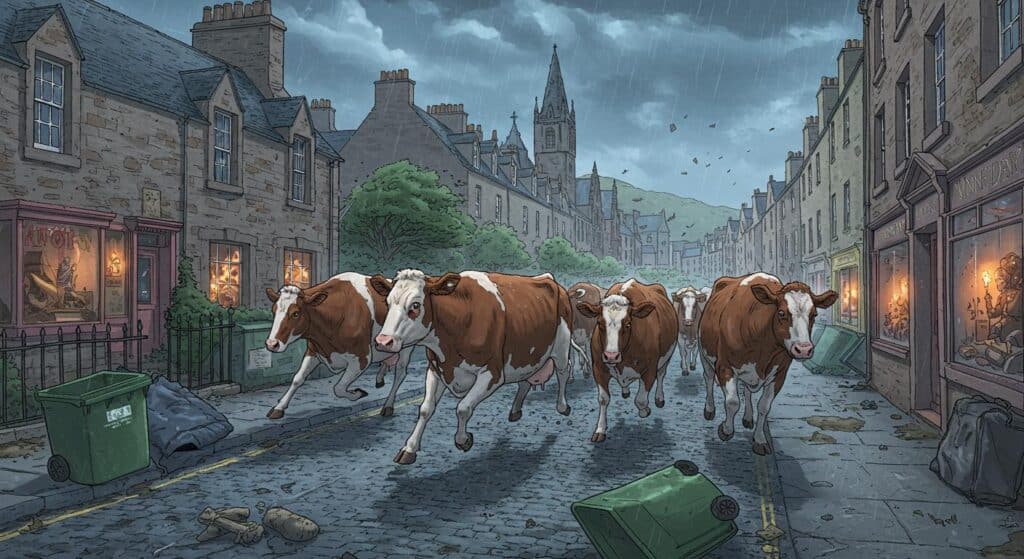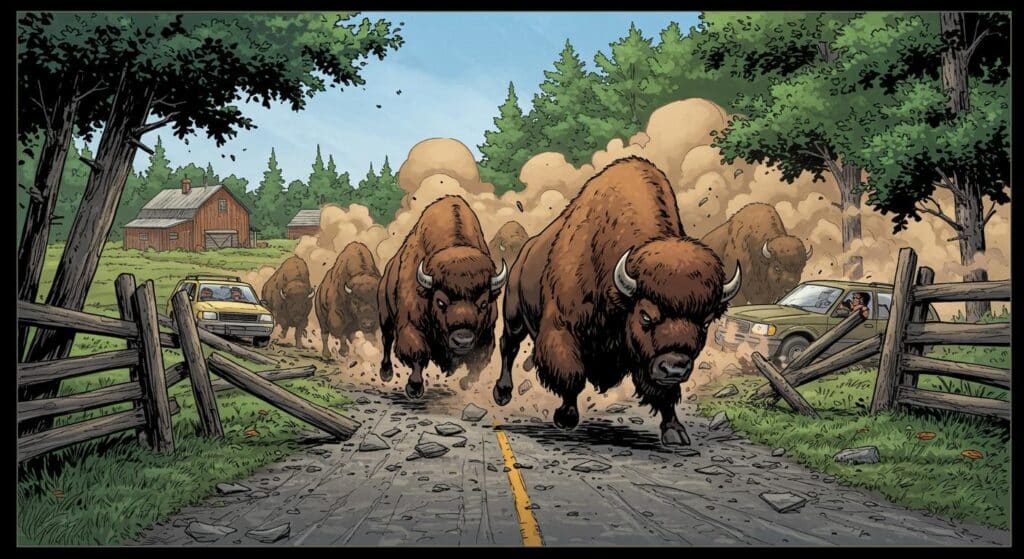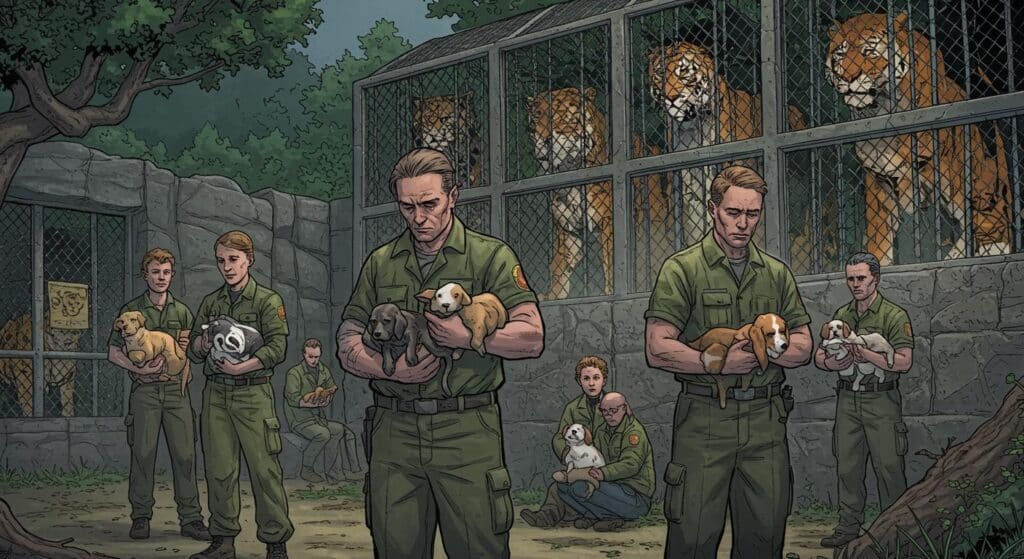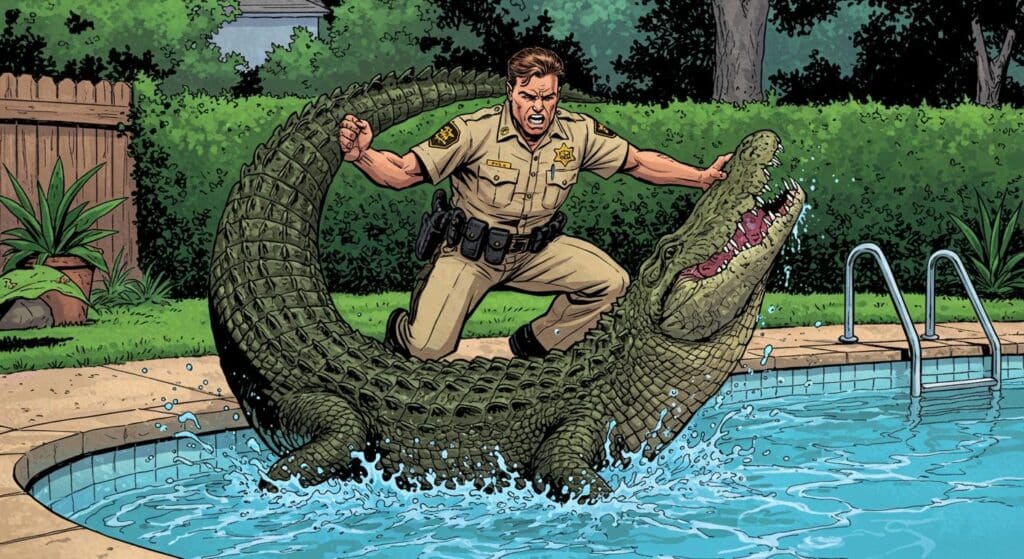It might sound like a fever dream conjured in a film studies seminar, but reports confirm a real-life experiment combining government wildlife management with one of Hollywood’s most notable divorce scenes. Along sections of the West Coast, the U.S. Department of Agriculture (USDA) is sending out drones to livestock farms, not with ranch hands, but with loudspeakers blasting audio of Adam Driver and Scarlett Johansson’s explosive argument from 2019’s “Marriage Story.” The aim? To teach local wolves that humans are, in the memorable words of a USDA supervisor, “bad.”
Hollywood, Decibels, and Drastic Measures
UPI reports that this creative deterrent method was inspired by a run of wolf attacks in Oregon—eleven cattle killed by wolves in just 20 days, according to The Daily Beast. Seeking to up their game beyond standard noise deterrents, USDA personnel outfitted drones with thermal cameras, spotlights, and a playlist that could only be described as eclectic: AC/DC’s “Thunderstruck,” Five Finger Death Punch’s “Blue on Black,” fireworks, gunshots, and—as the new pièce de résistance—a searing scene from Baumbach’s film full of human shouting and relationship angst. This is, by all public accounts, part of a wider “wolf hazing” strategy to reduce livestock loss in the area.
Paul Wolf (the name aptly noted in both UPI and The Daily Beast), a USDA district supervisor in Oregon, explained to the Wall Street Journal that the goal of this melodramatic montage is pure behavioral conditioning: “I need the wolves to respond and know that, ‘Hey, humans are bad.’” As detailed in both the UPI and The Daily Beast coverage, the hope is that the wolves will associate not just the noise but the intensity and unpredictability of the sounds with an unpleasant human presence—and decide the local cattle buffet isn’t worth the psychological price of admission.
Drones as Movie Projectors (Minus the Popcorn)
The practical mechanics of all this are surprisingly straightforward. The Daily Beast outlines how drone “cowhands” are dispatched at night, using thermal imaging to locate lurking wolves and then turning up the volume—sometimes literally spotlighting the animals mid-argument. Rather than classical wildlife sounds or simple alarms, this intervention borrows from modern pop culture. It’s a curious twist: a dramatic scene crafted to earn Oscar nods for its performers now deployed as a sonic scarecrow for apex predators. (Noah Baumbach may have set out to portray a marriage’s unraveling, but likely never dreamed one of his films would help defend Oregon cows.)
Interestingly, as described in the UPI piece, the program’s soundtrack is not limited to “Marriage Story.” AC/DC and Five Finger Death Punch form an ad hoc music festival, with fireworks and gunshot effects curated for maximum discouragement. If you’re picturing a wolf caught off guard by Adam Driver’s raw, emotional bellowing, you’re not alone—though, so far, the wolves have not offered reviews.
Wolf Psychology: Art Meets Animal Control
The theory, as explained by both UPI and The Daily Beast, is rooted in animal behavior research: wolves are intelligent, adaptable, and prone to remembering stressful or unpleasant experiences. Amplifying loud, unpredictable human conflicts is intended to teach the animals that farm-adjacent landscapes are chaotic and best avoided.
This approach does raise intriguing questions. Will wolves, over time, grow wise to the act? Does Adam Driver’s particular brand of passionate distress hold unique aversive properties, or would a less Oscar-nominated argument serve just as well? Are there government spreadsheets somewhere, tracking “effectiveness by cinematic genre” or perhaps even planning a future foray into Method Acting as Preventative Agriculture?
Absurd Innovations in Real-World Problem Solving
The unintentional comedy of the scenario aside, there’s a kernel of improvisational brilliance here. Officials facing persistent threats to livestock are, as the outlets document, deploying every tool at their disposal, including the less-expected section of the pop culture canon. This is less a parody of government than a snapshot of how quickly the real world can go from routine to head-scratchingly inventive.
And yet, one has to wonder—what cinematic moment gets queued up next in the fight against animal predation? Until the USDA releases a mixtape of their greatest deterrent hits, we’re left with the image of wolves, somewhere out in the Oregon night, pausing under the stars as Adam Driver’s voice echoes over the fields, debating whether the local cattle are truly worth the drama. In the end, has wildlife management ever been quite this surreal, or this oddly specific? The answer, apparently, is written somewhere between science, bureaucracy, and Netflix’s content library.







